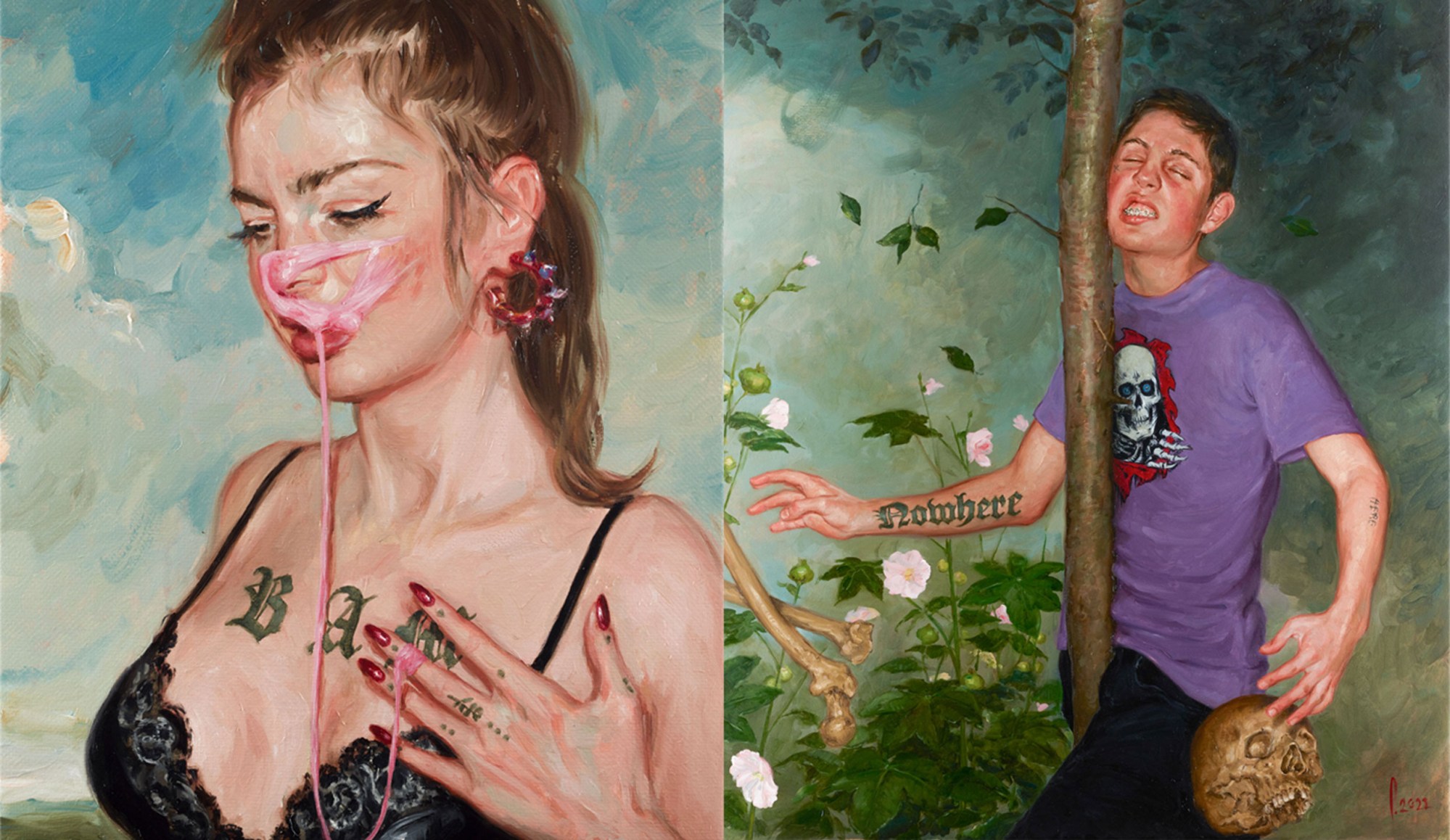For Dutch painter Pascal Möhlmann, pursuing art was never a conscious decision. Instead, from his bright studio in Zurich, he describes his creative journey as “an instant love affair” that began unfolding when he was very young. “Art has always been the only path for me,” he says. “To this day, my mom keeps telling everyone — whether or not they have heard it before — that from the moment I could hold something in my hands, she put pencils and brushes in there.” Had she decided to have him grasp a camera or an instrument instead, Pascal could have grown to become a successful photographer or musician. Yet, be it for a coincidence or due to a wider, mysterious plan, from the very beginning painting was his sole means of self-expression. Much like his artistic awakening, Hic et Nunc – the artist’s solo show open at Milan’s PLAN X gallery through 20 April – ponders the continuum between chance and fate in a series of striking, unlucky accidents on canvas.
Comprising nine life-scale oil paintings presenting subjects shaped after recent trends — from the return of the Y2K aesthetic and skate fashion to the rise of tattoo culture — Hic et Nunc is a dramatic, thought-provoking exploration of the contemporary; its underlying paradoxes and strangest contradictions. Named after a specific time of the day and presented in dialogue with the rest of the series, each piece serves as a reminder of the unexpected events awaiting us at every corner — whether by chance or divine intervention.
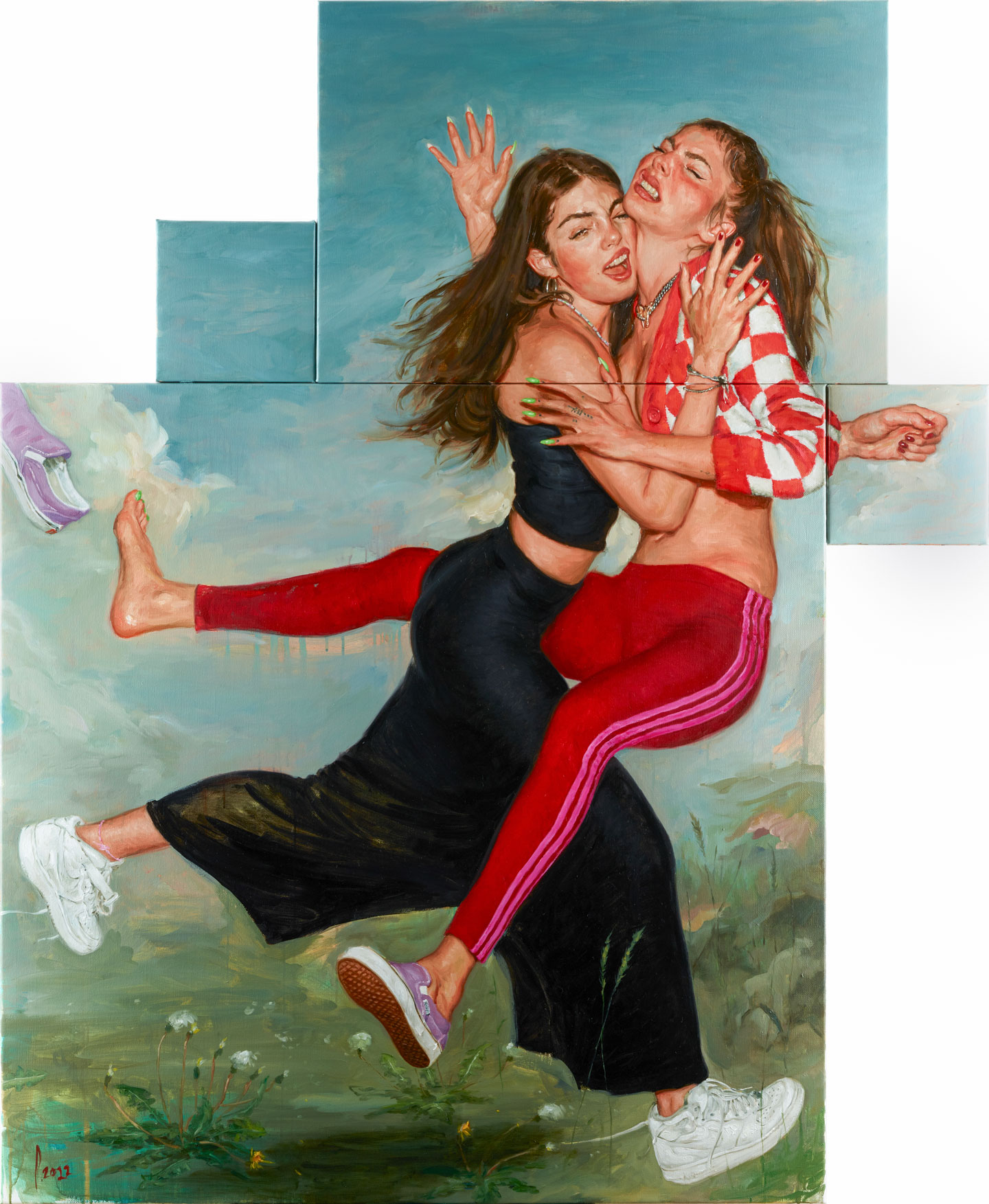
In one of Pascal’s newest artworks, a boy wearing a ‘Ripper’ T-shirt from the iconic skateboarding brand Powell Peralta walks into a tree, his face morphing into a grimace of pain as a couple of bones and the skull he carried with him slip from his fingers in the impact. Set against a bucolic background, a woman in flared leopard print trousers and a halterneck top glances back at the viewer in disgust: in front of her, a skeleton wearing nothing but a latex glove mirrors her posture and expression, as if an uncanny, morbid reflection. Elsewhere, two women abruptly clash into each other: one sporting an all-black outfit and boxfresh white AirForce 1’s; the other, rose-pink slip-on Vans paired with red Adidas leggings. Across all paintings from the show, a dense trail of clues — mainly memento mori and crosses disseminated as symbols of the ephemerality of the human experience — add another layer of interpretation to what, at first sight, feels like a criticism of today’s social media-driven appearance culture.
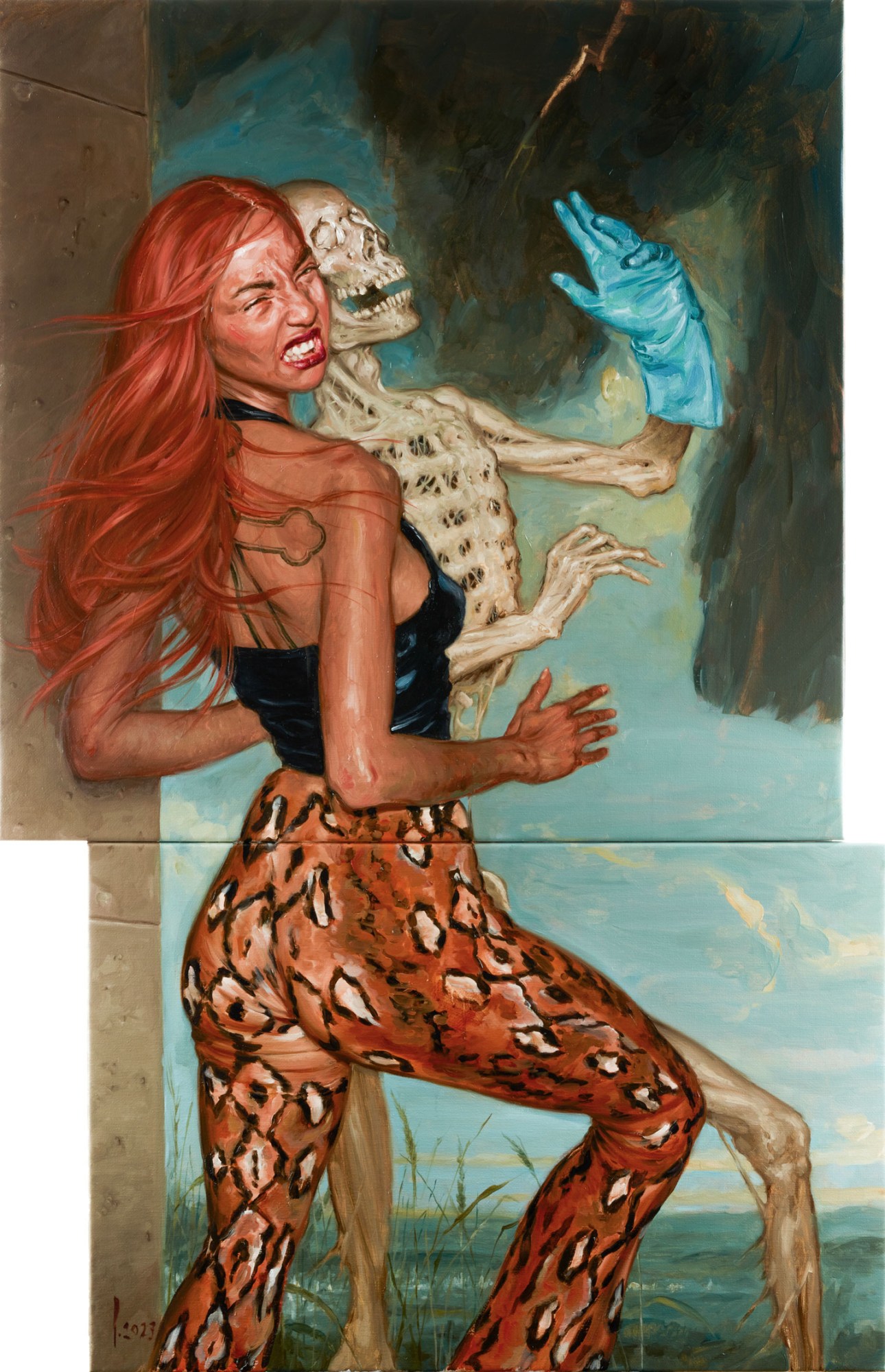
While certainly grounded in Pascal’s love of pop art and his acute observation of the reality around him, the inspiration for Hic et Nunc, which translates to “here and now”, was mostly autobiographical. “More than anything else, the characters portrayed in this body of work take after me and my clumsiness,” he says, laughing at the unfortunate consequences of his overly energetic, comical behaviour. “Believe it or not, I used to be a skater once — although a really bad one — which is why most of the figures in my paintings dress the way I do,” the artist adds. “Throughout my life, I must have bumped into every piece of furniture on Earth, hence the frequent collisions in these paintings.” Reflecting on the themes tackled in the project, he explains how, in a world on the verge of a climate disaster, our perpetual state of distraction and everyday obsessions act as coping mechanisms that allow us to carry on in the pursuit of superficial desires. We buy clothes we don’t need, and indulge in the fame amassed via our strategically-curated digital presence.
In a creative admission of guilt, instead of pointing the finger at others, Pascal plays with his “main character syndrome”, translating it into numerous painted alter-egos that speak of “the weird, nonsensical society we live in,” he says. “I am fascinated by humans’ ability to still feel like the main characters of their own Netflix series as the planet steers towards an environmental catastrophe at unprecedented speed. Despite being horrified by what is currently happening at both a political and ecological level, I am the first one to think I am not seriously going to die. In Hic et Nunc, I capture the dilemma that sees us caught between our awareness of the impending disaster and our thirst for new material things.” In short, today’s life makes for an unsettling picture that — as Pascal puts it — “screams for nothing but oil painting”.
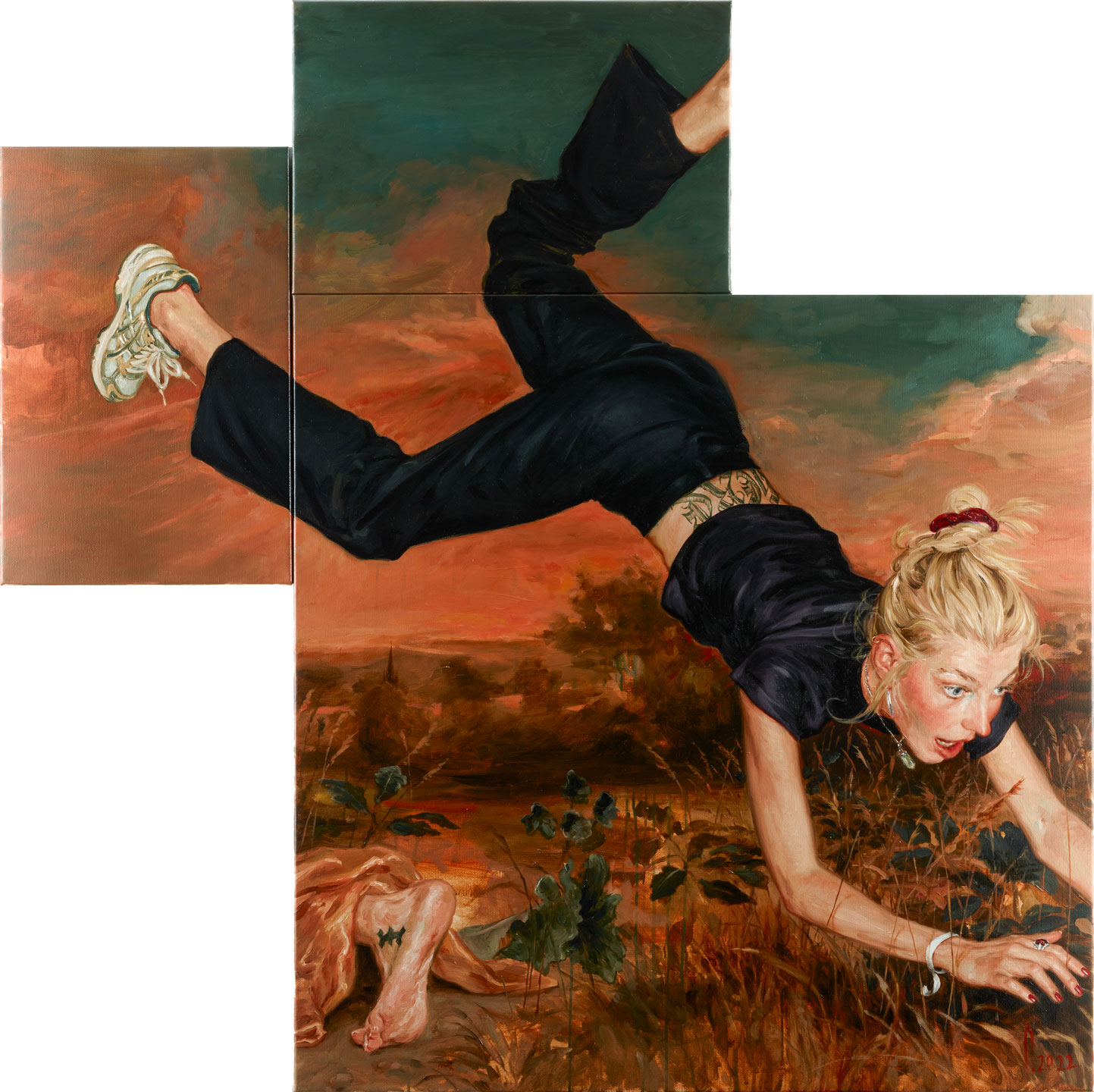
From a stylistic point of view, his recent series finds its aesthetic underpinning in the dramatically-charged scenes rendered in the masterpieces of the Old Masters: Pascal’s all-time favourites and ultimate artistic inspiration. To some extent, “Hic et Nunc was another excuse to experiment with baroque painting,” he says, explaining how the current apocalyptic scenario could serve as the perfect backdrop to one of Van Dyck or Caravaggio’s stirring chiaroscuro canvases. At first mocked by his fellow art students for his traditional taste, as years went by, Pascal gave in to his passion for it, progressively honing his ability to appropriate the visual language of pioneer painters such as Diego Velázquez, Peter Paul Rubens and Titian, and bring it straight into the current era. He did the same with his love of classical music which, in contrast with his punk and metal background, only reached him in recent years and has since shifted the mood in his studio.
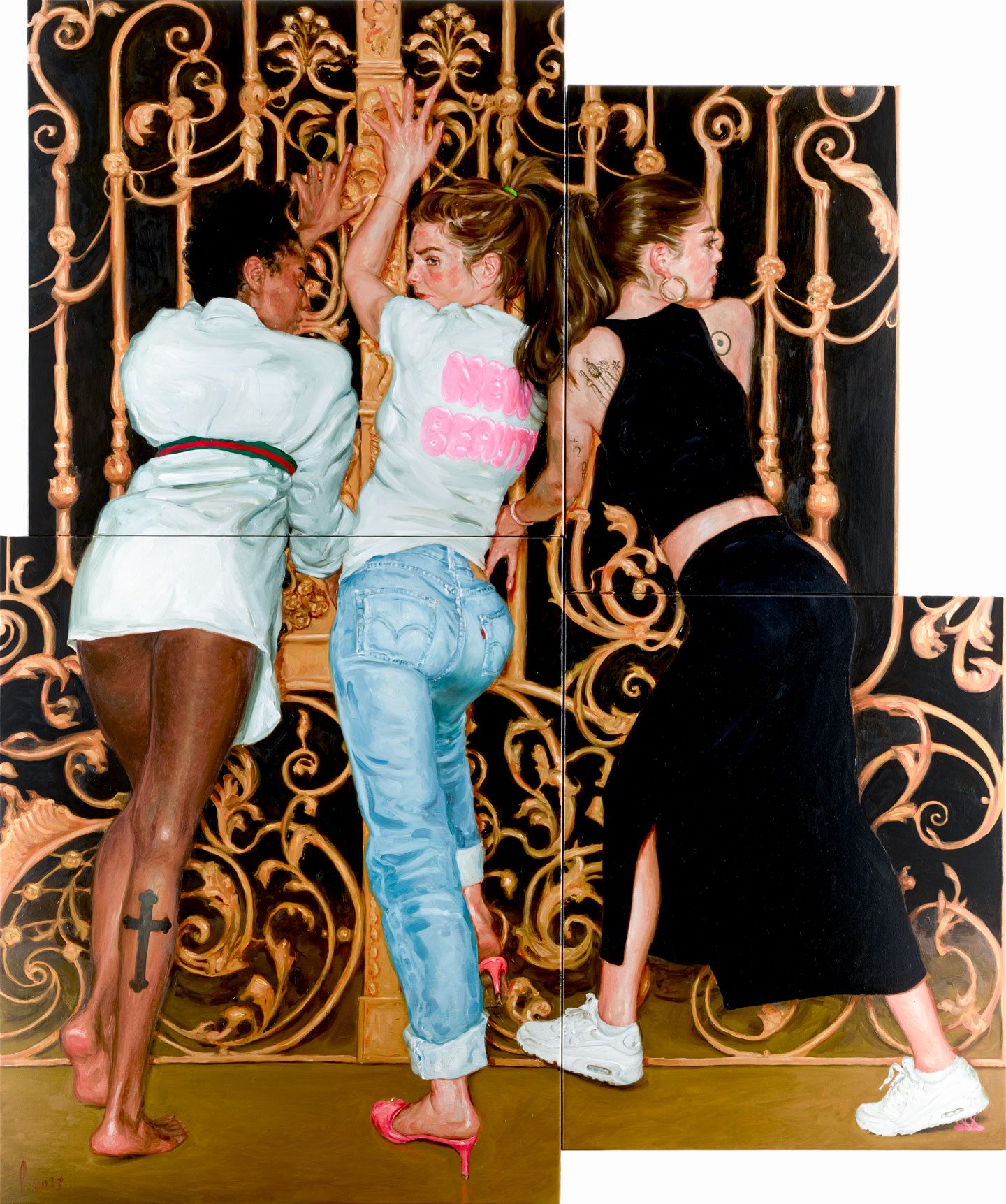
Just like the vignettes of life at the heart of Hic et Nunc, Pascal aims to immortalise the raw feeling of a fleeting moment with his work, quite content with raising more questions than it can answer. “Whenever I get started on a new painting, I tend not to over-analyse it, instead letting the work speak for itself to me and everyone else who comes across it,” he says. With its ambiguous, slightly eerie feel, “11:27” — the self-portrait depicting the artist face down on the floor next to his palette, a dart and a pack of chewing gum in a profane crucifixion scene — is the living proof of Pascal’s open-ended, provocative approach to painting. While shying away from interpretations of his work that feel “too literal or univocal”, the artist hopes that Hic et Nunc will remind viewers of the multiple layers of meaning existing beyond what we can see. “I recently came to the conclusion that the Western world could do with a little more believing in something, with a little more respect for anything, be it the Earth, others or even ourselves,” he says.
“In this show, I drew attention to the comical situations that occur to us when we are too busy, hectic or distracted to be in the present moment,” adds Pascal. “Whether catching people’s eye because of its aesthetic or symbolic value, the exhibition is an invitation for everyone to engage with, chase and fight for the here and now.”
Pascal Möhlmann’s ‘Hic et Nunc’ is open at PLAN X until 20 April.
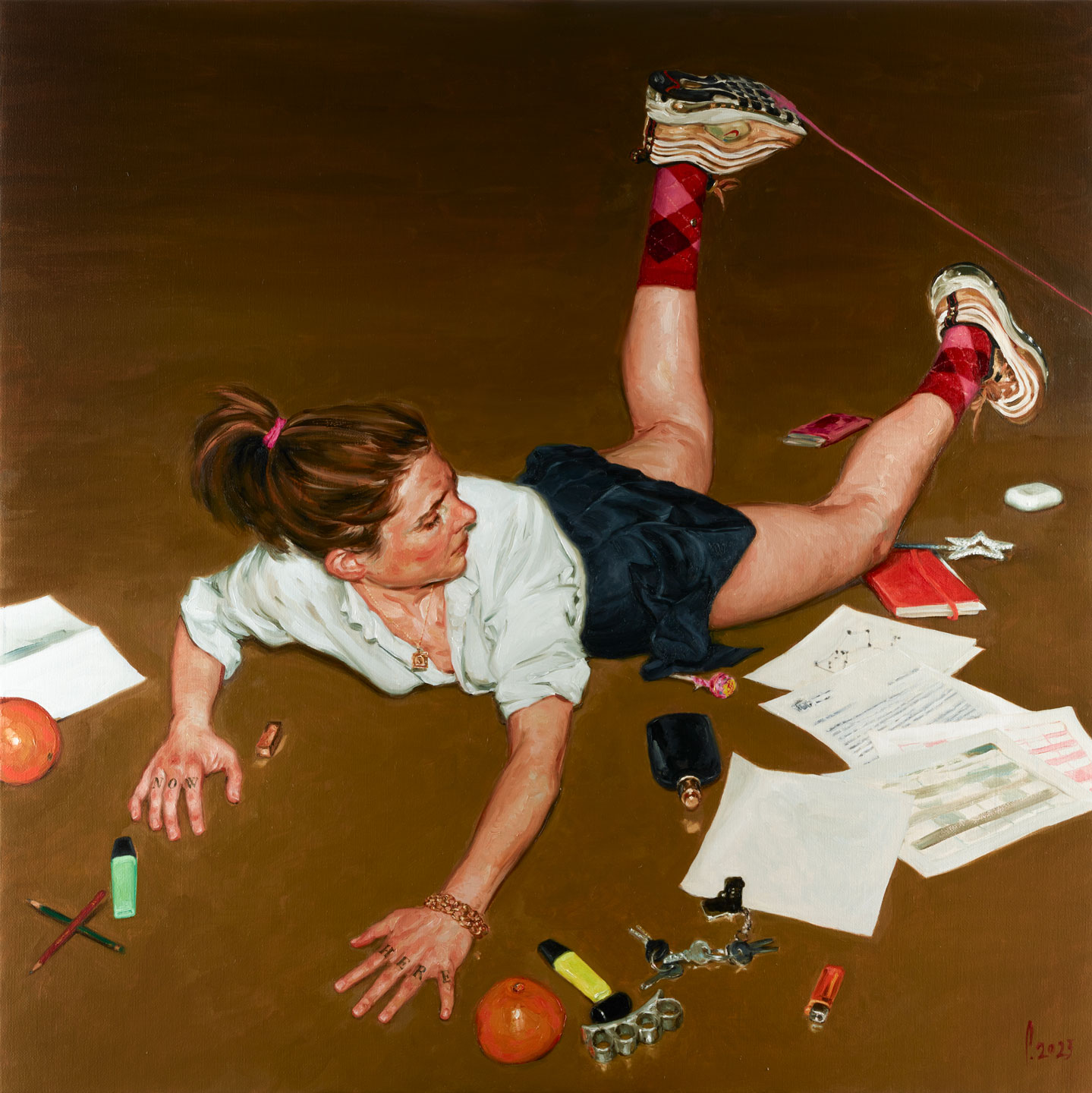

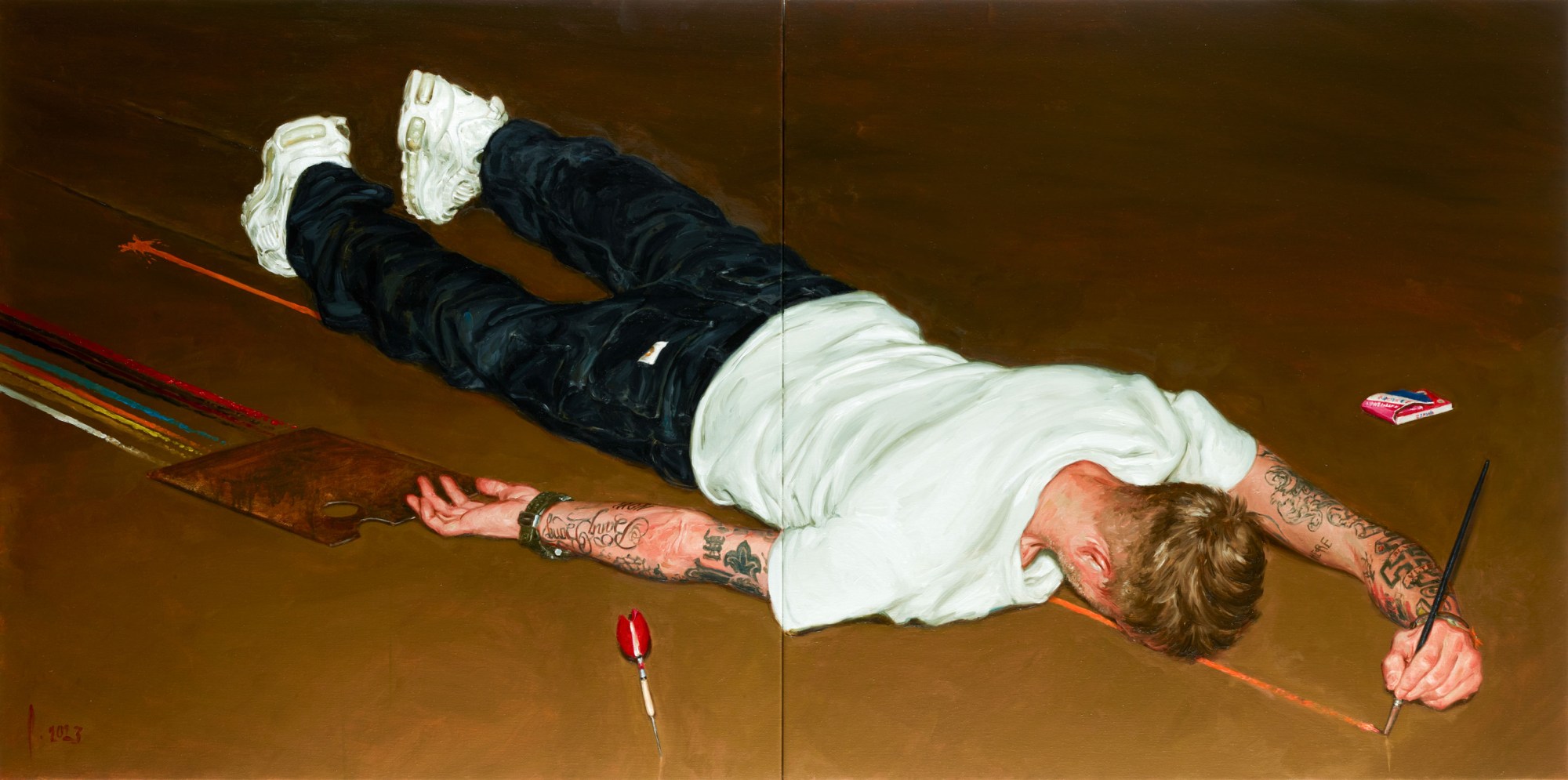
Credits
All paintings courtesy of the artist
